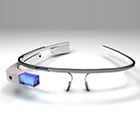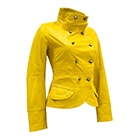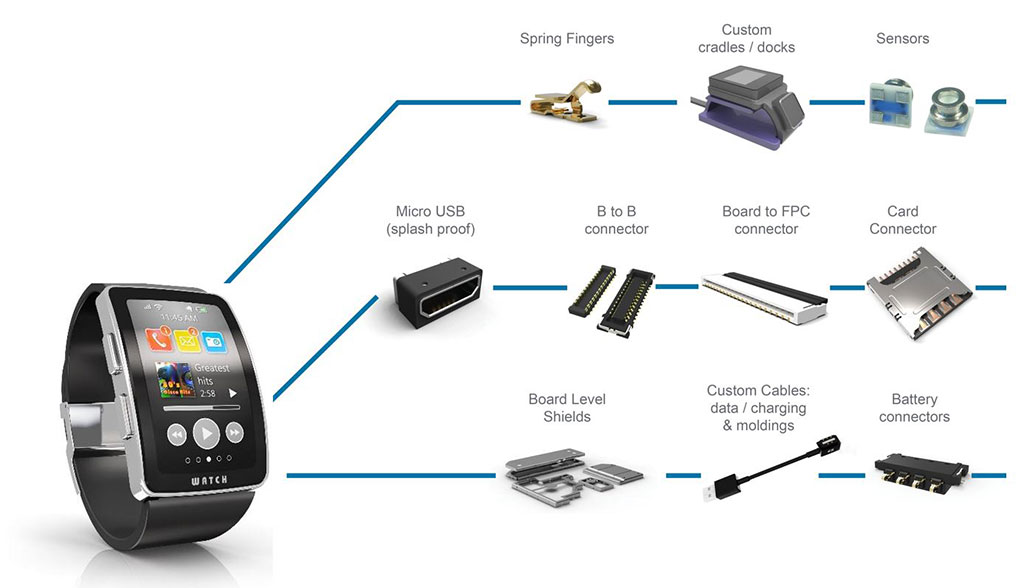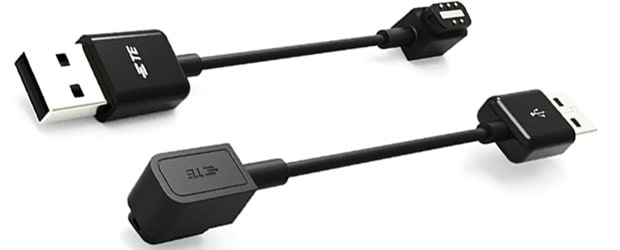
Trend Insight
The Rise of Wearable Devices
Wearable electronics have evolved from life-saving devices to fashion accessories. These products can range from activity monitor bracelets to smart glasses to even GPS enabled shoes: all of which now have a growing market demand.
Wearable electronics have been used for decades as hearing aids, pacemakers, and other medical devices that are common in today’s society. In fact, the original design for many consumer electronics, such as cellphones, which are often worn as portable music players, were not initially designed as one but have been adapted based on consumer needs for features and functionality for on-the-go connectivity. Wearable electronics have evolved from life-saving devices to fashion accessories and range from activity monitor bracelets, smart watches, and smart glasses to GPS enabled shoes: all of which now have a growing market demand. Although the emergence of wearable electronics stems mostly from consumer demand, there are a variety of wearable applications.
Applications:
- Infotainment: used to inform and entertain, including music, photos, videos, directions and e-mail.
- Activity tracking: used to monitor activities and functions such as walking, sleeping, heart rate and food consumption in order to provide individual consumers with immediate and vital feedback upon which they can take action by modifying their behavior.
- Health monitoring: used to monitor a diagnosed condition, and soon to support diagnosis, although regulatory requirements and concern for privacy mandate a long development period and testing for such technology.
- Industrial and enterprise: centers on wrist-worn terminals to provide real-time data including monitoring factory processes and updating warehouse stock. Smart glasses and bands are expected to receive rapid adoption for remote, “deskless” workers in the industrial segment.
- Soldier systems: integrate personal networks, sensors, external communications and the power to manage these systems. One goal is to link soldiers into a larger battlefield, with connectors and cable connecting subsystems required to be high performing, durable and rugged – yet light weight for soldiers who are on foot.




Defining Wearables
A wearable electronics device can be defined as one that has intelligence, and is able to take input, process that input, and provide meaningful output. For example, one function of an activity bracelet is to take raw data from a sensor, processes it, and generate a report on the number of steps taken over a given period. Sensors track motion with enough intelligence to distinguish between steps and other movements.
Sensors:
Wearable Electronics
Sensors are an important part of wearable electronics, and continue to become smaller and more sophisticated. While there are many types of sensors that can be used, the most common is an inertial measurement unit – usually an accelerometer. An accelerometer can track a specific movement, its direction, and its intensity or speed. One simple example of an accelerometer is when a mobile phone or tablet (the input) is rotated and the device processes the movement and rotates the screen accordingly (the output).
Other common sensors including pressure, temperature, position and humidity, support applications such as compasses, GPS, and gyroscopes to detect movement. Sensors used in medical applications can be used to measure and monitor blood flow, pulse, blood pressure, blood oxygen levels, muscle movement, body fat and body weight. The most successful wearables are those that use algorithms to process raw, sensed data into actionable, meaningful insight for the user.
Communications:
Input/Output
Wearable electronics must be able to communicate with the outside world. While wireless connectivity through short-range radio or other wireless protocols is popular, wired connectivity through a USB port is commonly required.
Power:
Charging Methods
Many wearables have a video display or a touch screen for user interaction. A significant challenge for such small displays is ease of use. Even a high-resolution display on a smart watch doesn’t offer much real estate. Maintaining usability requires the right balance between how much can fit on the screen compared to how readable the resulting information is. Managing the power consumption of these displays is a major motivator for leading wearable manufacturers. They make wide use of low power alternatives like e-ink or e-paper as opposed to full color LCD or OLED displays. As with any electronic device, wearables must be powered by rechargeable batteries or other charging methods. This commonly requires a port for connected power to recharge the batteries. Wireless power transmission is emerging as a key feature to be integrated in new wearable devices, and presents the need for waterproofing.
Processing:
Updates
Another common hallmark of wearable electronics is the ability to run a variety of applications while an app is updated or changed. A smart watch, for example, is similar to a mobile phone. It is a computer that enables the wearer to perform a variety of tasks while connecting independently to the internet for critical app updates and downloads.
Wearables and the IoT
Wearable electronics are a subset of the Internet of Things (IoT). IoT is the migration of the Internet beyond people. One example is the use of a smart phone or watch to remotely unlock a home, control the thermostat, and either arm or disarm a security system – from anywhere in the world.
IoT can also function without human intervention. A smart watch can be pre-programmed to turn up the heat on cold mornings and turn down the heat at night, or check the forecast and then adjust house temperatures based on that information.
Internet Protocol Everywhere:
The Key to IoT
The key factor in IoT is the use of Internet Protocol (IP). IP is a communications protocol used by Ethernet and the Internet to control the flow of information. Every connected device has an IP address, giving it the capability to communicate with every other IP device. Firewalls, passwords, and other security measures control what devices communicate with each other. Wearable electronics, by virtue of an IP address, join the IoT.
One advantage to being part of the IoT is that wearable electronics do not have to exist as standalone devices. Activity data from a fitness bracelet can be downloaded to an app on a computer, which can provide a detailed analysis of trends over time in order to track progress. The music player in a watch can retrieve songs using cloud computing. The end result is that people everywhere can interact with things – TVs, homes, cars, appliances, and life-saving devices – as a result of a small device, held close to, or on our bodies – just by delving into the world of wearable electronics and the IoT.
Small is Beautiful
Wearable electronics are enabled by the miniaturization and integration of components, which allow powerful functions to be packed into a very small space. Sensors, computer chips, cameras, speakers, and other components continue to grow smaller while becoming more capable.
Packaging Challenges:
Wearable Electronics
Packaging these components into the right form factor and level of manufacturability is a challenge. As a leader in connectivity, TE works closely with designers and manufacturers of wearable electronics. Figure 2 shows typical connector solutions for a smart watch. The key feature for most of these, as well as other components, is a low profile with a small footprint. Low profile is especially important to allow the device itself to assume a slim design.

Figure 2 – Smart Watch Connector Solutions
Integration of Parts:
Molded Interconnect Devices
With real estate at a premium, the integration of parts not only simplifies the system, but uses available space to maximum efficiency. Antennas can be embedded directly into the housing, as shown in Figure 3 for a mobile phone. Such Molded Interconnect Devices (MIDs) and emerging antenna technologies allow circuit traces, ground planes, and shielding to be integrated into the molded part. The substrate can be either an engineered plastic or a composite. Composites become increasing attractive in their ability to increase material strength and can be cost-effectively molded and metalized.

Making It Rugged
Many wearable systems are designed to be worn during sports and other rugged activity. Ruggedness as a concept is relative and can only be defined in terms of the application. The ruggedness requirements for a heart monitor are different from those of an activity monitor worn by a cyclist. Soldier wearables operate on an entirely different level of ruggedness, requiring wider temperature ranges, better shock and vibration resistance and resistance to chemicals or solvents that would ruin a consumer device.
Making wearable electronics more resistant to environmental hazards will make devices more reliable and easier to use. You can achieve a certain degree of weatherproofing by using a splash-proof USB port and rubber cover, but this does not make the device waterproof. Designers are looking to close openings in devices to achieve IP67/68 sealing for a waterproof design. Ingress Protection (IP) is used to specify the environmental protection of enclosures around electronic equipment. Not only does waterproofing yield a more robust design, but it promotes easier use. Some approaches, like wireless power transmission, are emerging in the market.

Magnetically Attached Cable: USB and similar connectors use a friction fit to keep connectors mated. An alternative approach, shown in Figure 4, uses magnets to hold the connector in place with springloaded contacts on the cable side. Device-side contacts and magnets can be sealed to prevent liquids and moisture from entering the device. As opposed to mating micro USB connectors, the magnets help pull the cable into proper position.
Contactless Data Connections: use magnetic attachments and transceivers in both the device and cable assembly to create a wireless connection. This approach can support high-speed I/O protocols such as USB 2.0 and 3.0. The short distance between transceivers provides a power-efficient connection.
Wireless Charging: batteries can be charged without a direct electrical connection. Wireless charging, or inductive charging, uses induction coils in the charging unit and electronics to charge the device. The electromagnetic field created by the charging coil allows energy to be transferred to the receiving coil, acting like a transformer. The advantages of wireless charging include:
- Increased durability: no wear and tear to connectors
- Increased reliability: no connector port providing entry for contaminants
- Easier use: no small connectors to mate
- Design freedom: industrial designers are free to create new, unusual forms for devices
- Longer life: building power transmitters into common objects means devices charge continuously
Drawbacks:
Wireless Charging
The drawbacks to wireless charging include lower efficiency, higher heat generation and slower charging. Each of these issues are related and will be improved by newer coil structures and higher coupling frequencies. Most wearable devices are extremely low-powered, meaning the impact of these drawbacks may be minimal.
Smart Textiles
Another trend in wearables is to embed sensors and electronics into textiles, from specialty athletic wear to everyday clothing. The challenge is to create electronic clothing that can be treated like other clothing, being comfortable, flexible, and washable. Interconnections and electronics must be unobtrusive and robust. This requires:
- Reliable terminations that are insulated, robust and waterproof
- Flexible, garment-based antenna and transceiver solutions
- Stretch-conductive insulated wire
- Small, dryable batteries
- Crease and crimp resistant PCB/FPCs
Wearables Market:
The electronic wearable market’s challenge is to create devices that can offer useful data that will improve our lives. Whether worn on the wrist, head or foot, wearables must be fashionable, rugged, and easily rechargeable.



